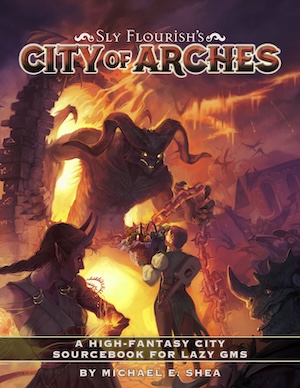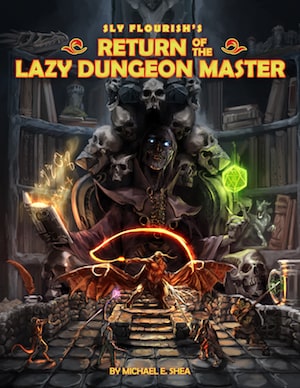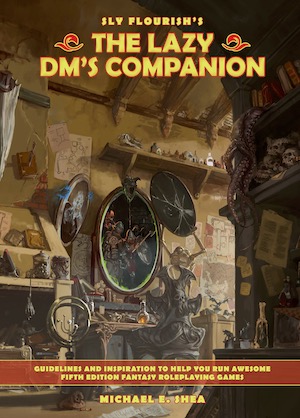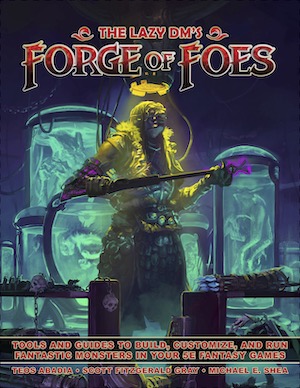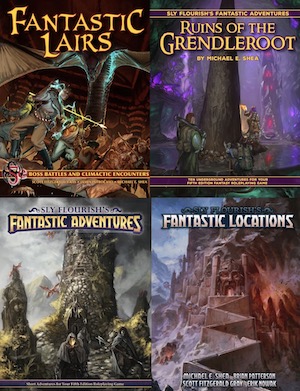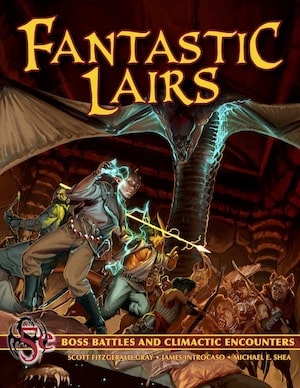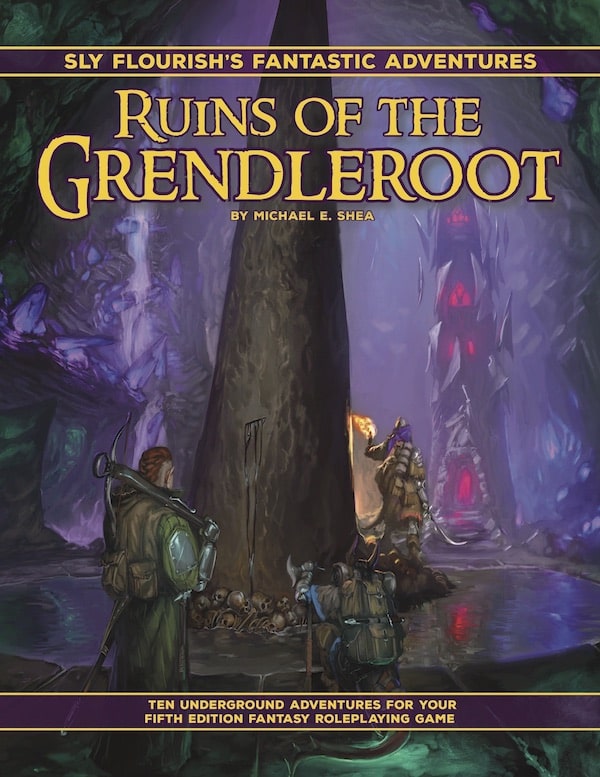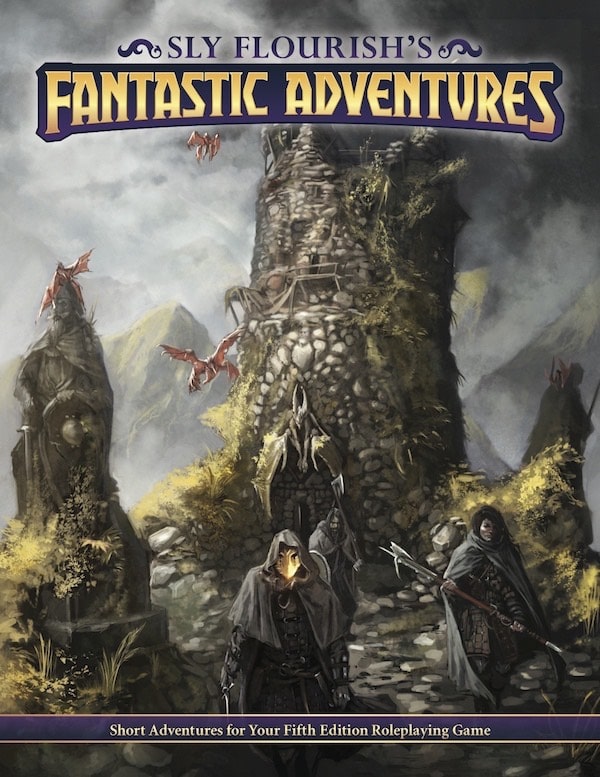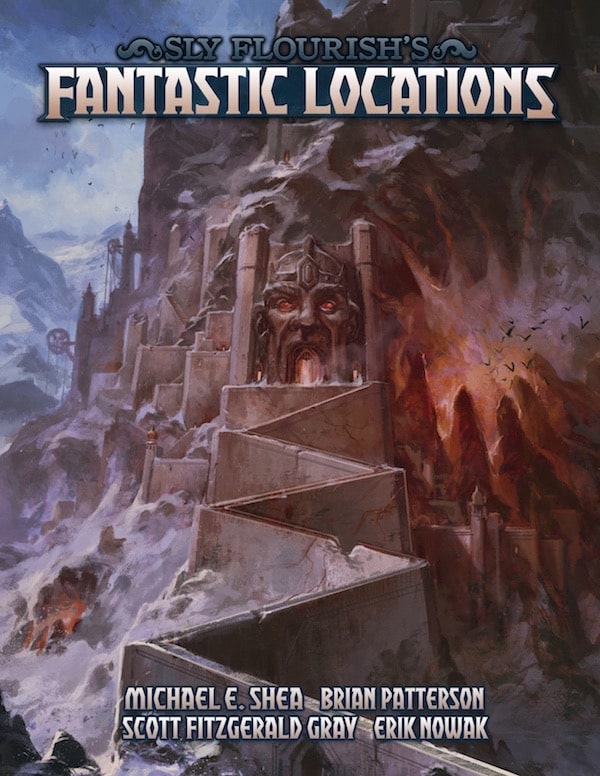New to Sly Flourish? Start Here or subscribe to the newsletter.
Offer Choices in Every Scene
by Mike on 24 February 2025
I have two great reads for you today. The first is the chapbook Adventure Crucible – Building Stronger Scenarios for Any RPG by Robin Laws. This book inspired my series on adventure types, starting with Dungeon Crawls. You can find links to the others at the top of that article.
The second great read is a blog post from the Arcane Library called How to Design Exciting D&D Encounters. This article at me from the Arcane Library newsletter – subscribe here.
Both pieces cover ways to ensure scenes and adventures in our RPGs excite our players and both cover one particular element we do well to consider – offering choices.
Choices are true actions of the characters in our RPGs. Characters can only make meaningful choices if there are other options they could choose but decide to skip. The more narrow this range of choices becomes, the more boring the game might become. When a character has three to five possible options in a turn during a battle – all of them viable – they feel empowered. If they only have one thing they can do ("I hit it with my sword") that's not much of a choice.
One reason combat takes such a prominent place in fantasy d20 RPGs is because combat choices are typically clear. Different attacks, different movement options, different bonus actions, different spells, different abilities – all these possible actions offer choices to players. They're intellectually stimulating.
Consider including such intellectually stimulating choices in all scenes. The characters go to town and meet an important NPC. The NPC tells them about the dangerous cave outside of town in which local treasure seekers sought a powerful idol but never returned. Will you brave adventurers go in there and seek it out? What choice is there? Sure? What the hell else are we going to do?
That's no choice.
But now our heroes come to town and meet with the local adventurers' guildmaster. "Hey, I have three jobs for you. Pick one. Pick another when you're done with that one. The last job we'll farm out to some other group." That doesn't sound particularly stimulating but it offers a choice. It matters which quest they pick and which they leave behind.
The characters come into town and meet a priest who wants to tell them about the marriage of the gods Rava and Volund. Ok, great. We'll sit here and hear all about these gods. That's not a choice. That's exposition.
Instead, a dwarf merchant is pissed off at the heretical priest's statements about this "marriage" between Rava and Volund and threatens to have his mercenaries beat the priest if the priest doesn't shut up. And that priest just can't shut up. What do the characters do? Who do they side with? What happens next?
That's a choice. That choice builds an interesting scene.
Whether your scene is delving through a dungeon, negotiating with a local thieves' guild leader, researching old magic in an arcane library, or fighting a horde of undead – ask yourself what choices you leave open for the characters and their players. Are there options here? Are they viable? You don't need to define each and every single choice but there should be some range of possible choices and players can certainly come up with their own.
Otherwise all we've done is offer a single path in which we spew forth our own narrative while our players sit back bored in their chairs.
Noting Choices During Prep
Consider identifying potential choices when prepping your game, perhaps during step 3, the "scenes" step, of the eight steps from [Return of the Lazy Dungeon Master]. When you jot down a quick description of the scene, maybe meeting the hag Lady Bloodnails in the dragon's grotto, ask yourself what options exist for the characters. Can they negotiate with her? Can they fight her? Can they sneak around her or learn something else about her from her environment? What can they do here? Three options are usually good. You don't always need an option. Maybe fighting Ourivax the Sallowsworn is really what everyone wants to do. But you don't want a series of scenes that all just lead to the next. Think about what options the characters can choose from and jot them down next to your short scene description.
So the next time you're prepping your game, ask yourself: what choices do you offer in each scene you intend to run in your next session?
More Sly Flourish Stuff
Each week I record an episode of the Lazy RPG Talk Show (also available as a podcast) in which I talk about all things in tabletop RPGs.
Last Week's Lazy RPG Talk Show Topics
Here are last week's topics with time stamped links to the YouTube video. Lots of deep dives into the new D&D 2025 Monster Manual!
- Hexploration Decks
- Mike on EN World and Kobold Press Podcasts
- All Three D&D 2024 Core Books are Released
- 2025 Monster Manual is the Most Important DM-Focused D&D 2024 Book
- Is the 2025 Monster Manual Better than the 2014 MM?
- Is the D&D 2025 MM the Best 5e Monster Book?
- Could It Have Been Better? Of Course.
- 2025 Monster Manual Monsters Hit at Their Challenge Rating
- Other Designers on the 2025 Monster Manual Monster Math
- D&D 2025 Monster Manual Compared to Forge of Foes
- 2025 Monster Manual Effects Don't Negatively Impact Damage Anymore
- 2025 Monster Manual Vampire
- 2025 Monster Manual Requires Looking Up Spells
- 2025 Monster Manual Cultist Fanatic
- The Language of the 2025 Monster Manual
- 2025 Monster Manual Has No Orcs, Drow, or Duergar
- 2025 Monster Manual Static Initiative Scores
- 2025 Monster Manual Crappy Treasure "Tables"
- 2025 Monster Manual Crappy Ability Score Tables
- 2025 Monster Manual Awesome Contextual Random Tables
- 2025 Monster Manual Alphabetically Sorted Most of the Time
- 2025 Monster Manual What Else Is Missing?
- 2025 Monster Manual Day 1 Errata
- 2025 Monster Manual Final Thoughts
Talk Show Links
Here are links to the sites I referenced during the talk show.
- BackerKit: Hexploration Decks by Inkwell Ideas
- Mike on Morrus's Unofficial Tabletop Podcast (YouTube – MM starts at 1:18:00)
- Mike on Morrus's Unofficial Tabletop Podcast (Podcast Recording)
- Mike on Kobold Chat Talking About Doom Points
- Paul Hughes on 2025 Monster Manual on a Business Card
- Alphastream YouTube Monster Manual Analysis
- Bob World Builder on the Monster Manual
Last week I also posted a YouTube video on The Red Portal Part 1 – Dragon Empire Prep Session 12.
RPG Tips
Each week I think about what I learned in my last RPG session and write them up as RPG tips. Here are this week's tips:
- When it works for pacing, have minions flee or die when their bosses drop.
- Let some bosses suck the life out of minions for temporary hit points.
- Show players how many legendary resistances or doom points a villain has so they can see their progress at eliminating them.
- Give yourself a good 60 to 90 minutes to run a big boss fight.
- Add interactive terrain and monuments to big boss battles.
- Add 25% more HP to a boss for each extra character above four.
- Add roleplay or exploration scenes before a big boss fight where the characters can reduce the forces they have to fight.
Related Articles
- Are Actual Play Games Hurting Home-Game GMs?
- Making the Most of the Monster Manual
- Customizing Monsters
Subscribe to Sly Flourish
Subscribe to the weekly Sly Flourish newsletter and receive a free adventure generator PDF!
More from Sly Flourish
Sly Flourish's Books
- City of Arches
- Return of the Lazy Dungeon Master
- Lazy DM's Companion
- Lazy DM's Workbook
- Forge of Foes
- Fantastic Lairs
- Ruins of the Grendleroot
- Fantastic Adventures
- Fantastic Locations
Share this article by copying this link: https://slyflourish.com/include_choices_in_each_scene.html
Have a question or want to contact me? Check out Sly Flourish's Frequently Asked Questions.
This work is released under a Creative Commons Attribution-NonCommercial 4.0 International license. It allows reusers to distribute, remix, adapt, and build upon the material in any medium or format, for noncommercial purposes only by including the following statement in the new work:
This work includes material taken from SlyFlourish.com by Michael E. Shea available under a Creative Commons Attribution-NonCommercial 4.0 International license.
This site uses affiliate links to Amazon and DriveThruRPG. Thanks for your support!
